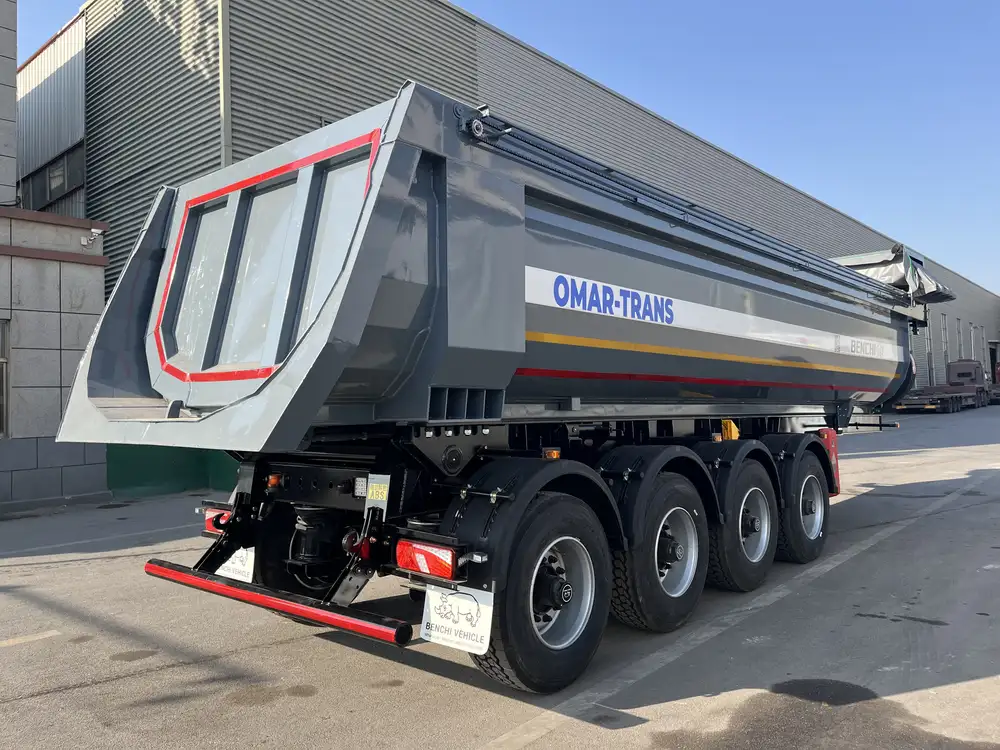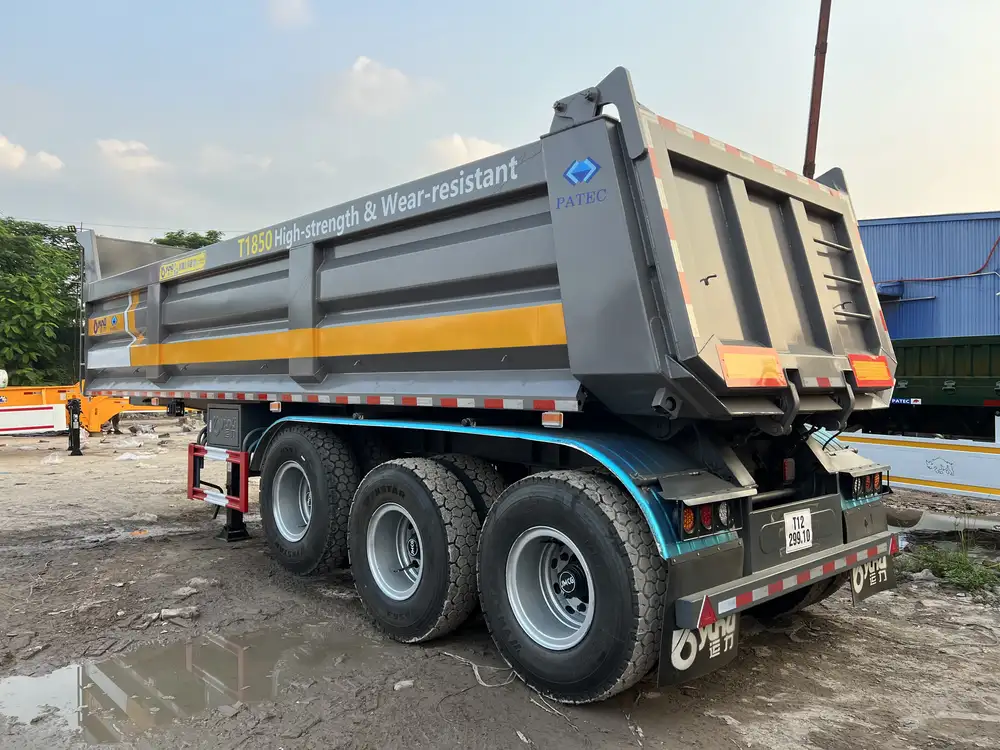When dealing with semi-trailers, understanding how to efficiently release a hitch is crucial for manufacturers, transporters, and drivers alike. Proper handling not only ensures operational efficiency but also enhances safety on the roads. In this extensive guide, we will delve deep into the mechanics of semi-trailer hitches, exploring the steps to release them, troubleshooting common issues, and providing valuable insights to improve safety and efficiency.
Table of Contents
Understanding Semi Trailer Hitches
- 1.1 Types of Semi Trailer Hitches
- 1.2 Components of a Semi Trailer Hitch
Step-by-Step Guide to Releasing a Semi Trailer Hitch
- 2.1 Pre-release Checks
- 2.2 Releasing the Hitch
- 2.3 Post-release Safety Checks
Common Issues and Troubleshooting
- 3.1 Stuck Hitches
- 3.2 Misalignment Problems
- 3.3 Safety Mechanism Failures
Best Practices for Hitch Maintenance
- 4.1 Regular Inspections
- 4.2 Lubrication Tips
- 4.3 Safe Storage Practices
Understanding Semi Trailer Hitches

1.1 Types of Semi Trailer Hitches
Semi-trailer hitches come in various types, each suited for specific applications:
- Fifth Wheel Hitches: The most common type for semi-trailers, offering better stability during transport.
- Gooseneck Hitches: Typically used for hauling loads with a pickup truck, these provide enhanced maneuverability.
- Ball Hitches: More common with light trailers, yet some heavy-duty applications may require larger ball hitches.
1.2 Components of a Semi Trailer Hitch
Understanding the components is essential for a smooth release process. The main elements include:
- Coupler: Engages with the hitch ball, ensuring a secure connection.
- Kingpin: A pivotal element that locks into the fifth wheel.
- Safety Mechanism: Prevents accidental release while in transit.
Identification of these components will make the release process intuitive and straightforward.
Step-by-Step Guide to Releasing a Semi Trailer Hitch

2.1 Pre-release Checks
Before initiating the release process, ensure a safe environment by performing the following checks:
- Identify the Vehicle Orientation: Ensure the tractor unit is parked on a level surface.
- Engage the Parking Brake: Secure both the tractor and trailer to prevent movement.
- Inspect Surroundings: Ensure that there are no obstacles around the vehicle which might impede movement during the release.
2.2 Releasing the Hitch
To proceed with the release, follow these detailed steps:
- Remove Safety Pins: Undo any safety pins or locks that may be securing the hitch.
- Lower the Landing Gear: If applicable, lower the landing gear to support the trailer’s weight during the release.
- Disconnect Electrical Connections: Detach any electrical lines connected to the trailer, ensuring all lights and brake signals are disconnected.
- Engage the Release Mechanism: Depending on your hitch type:
- For Fifth Wheel Hitches: Pull the release handle located at the rear of the hitch.
- For Gooseneck Hitches: Rotate the release lever found on the coupler.
- For Ball Hitches: Simply lift the latch or lever.
- Remove the Trailer: Gently pull the tractor forward until the trailer is clear of the hitch. Ensure the landing gear is adequately lowered to stabilize the trailer once disconnected.
2.3 Post-release Safety Checks
After releasing the hitch, perform these safety measures:
- Inspect the Hitch Area: Check for any visible signs of wear or damage that could impede future operational performance.
- Secure the Trailer: Verify that the landing gear is fully engaged and stabilize the trailer to prevent rolling.
- Document Any Issues: If any problems were encountered during the release, note them for further investigation or maintenance.

Common Issues and Troubleshooting
3.1 Stuck Hitches
It’s not uncommon to encounter hitches that refuse to release. Here are reasons and solutions:
- Rust or Corrosion: Inspect the hitch for signs of rust. A penetrating oil can help, applied generously, and allowed time to set.
- Incorrect Alignment: If the trailer and tractor aren’t well-aligned, re-approach the trailer and attempt the release again, ensuring proper alignment through minor adjustments.
3.2 Misalignment Problems
One of the frequent issues seen with semi-trailer hitches is misalignment. Here’s how to address it:
- Check Kingpin Position: If the kingpin is not seated correctly, realign it by slightly adjusting the tractor’s position.
- Adjust the Landing Gear: Ensure the trailer is level by adjusting the landing gear; improper leveling can cause the hitch to misalign.

3.3 Safety Mechanism Failures
If the safety mechanism fails to disengage, consider:
- Inspecting the Mechanism: Verify that no debris or corrosion is interfering with its operation.
- Lubrication: A lack of lubrication can cause sticking. Use a high-quality lubricant as per the manufacturer’s guidelines.
Best Practices for Hitch Maintenance
Maintaining semi-trailer hitches is paramount for safe and effective operations. Implement the following best practices:
4.1 Regular Inspections
Schedule regular inspections, focusing on:
| Inspection Focus | Recommended Frequency |
|---|---|
| Visual inspection | Weekly |
| Hitch wear and tear | Every month |
| Safety mechanism checks | Bi-monthly |
| Lubrication of moving parts | Monthly |

4.2 Lubrication Tips
Proper lubrication extends the life of your hitch. Use the following guidelines:
- Choose the Right Product: Utilize hitch-specific grease.
- Frequency: Lubricate the hitch at least once every month or after any long-haul travels.
- Application: Focus on the coupler latching mechanism and any pivot points to ensure smooth operation.
4.3 Safe Storage Practices
Safely storing semi-trailer hitches helps prevent long-term damage. Recommendations include:
- Sheltered Storage: Keep hitches indoors or under a waterproof cover to guard against the elements.
- Regular Cleaning: After each use, clean the hitch immediately to prevent buildup of grime or debris.
- Protection from Elements: Use protective covers specifically designed for the type of hitch to avoid corrosion.
Conclusion
Releasing a semi-trailer hitch might seem straightforward, but it involves a series of critical steps and precautions that cannot be overlooked. By following this comprehensive guide, you will not only enhance your understanding of semi-trailer hitches but also improve your operational efficiency while minimizing risks associated with improper handling.
By incorporating regular maintenance and being aware of common issues, you can ensure that your trailer hitches remain functional and reliable throughout their operational lifespan. The significance of diligent care and informed procedures cannot be understated, as they contribute directly to the safety and effectiveness of your logistics operations. Let’s keep our roads safe and our businesses flourishing.



